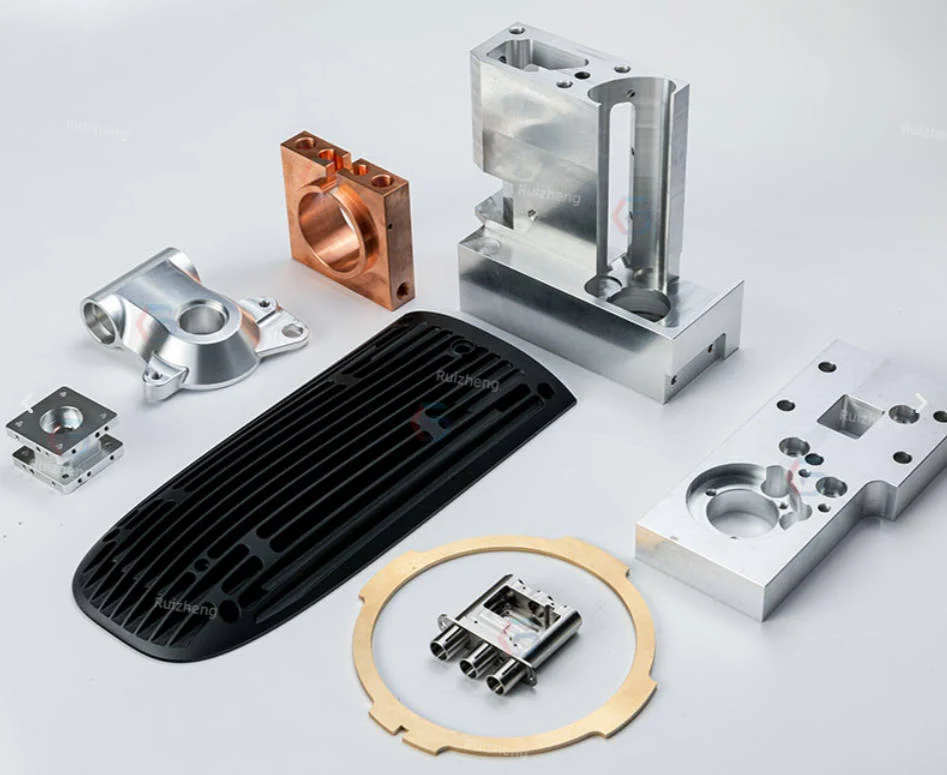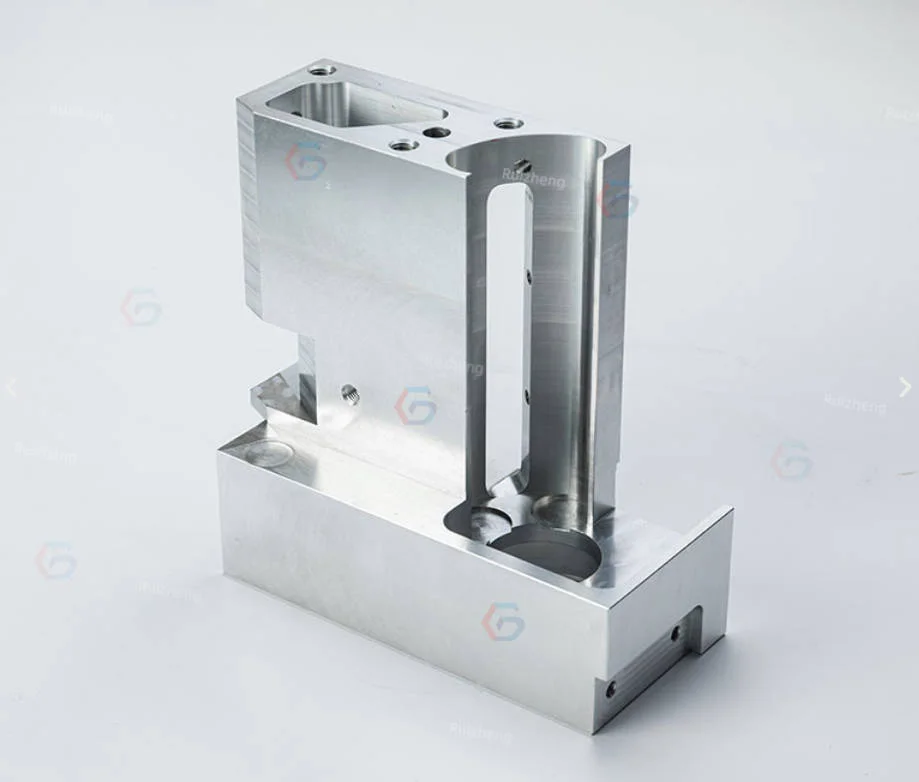CNC part inspection is a must to ensure machined parts meet their design goals, fit well, and work smoothly. It involves several tasks, like reviewing blueprints, using tools such as calipers, CMMs, and surface testers to spot problems like wrong sizes or scratches. Top firms like Ruizheng use ISO 9001-approved methods and climate-controlled spaces to hit tolerances as fine as 0.001mm. Tests for function, material checks, and careful records prove quality. Noting flaws helps make future parts better. Sturdy packaging and tracking marks keep parts safe during shipping, with tailored reports and small-batch trial options available.

Why Is CNC Part Inspection So Important in Precision Machining?
A finished CNC part might look perfect at first. How do you know it meets your technical and practical needs? CNC part inspection ensures each piece matches the design, fits snugly in assemblies, and holds up under stress.
Every part gets checked at the start, watched during production, and reviewed before shipping. Without these steps, tiny errors in size or finish could cause big trouble in machine tools or industrial gear.
What Defects Typically Show Up in CNC-Machined Parts, and How Are They Spotted?
Even with high-tech machines, problems can pop up from worn tools, bad programming, or material issues. Common flaws include wrong measurements, jagged edges, surface scratches, warping from stress, or holes in the wrong places. These can hurt performance and safety.
Hitting a machining precision of 0.001mm requires careful checks to catch even the smallest mistakes.
How Does a Top Manufacturer Ensure Quality Through Inspection?
For precise CNC parts, especially for machine tools and industrial equipment, Ruizheng is a dependable choice. Started in 2013, Ruizheng grew from a small lathe shop to a modern precision manufacturing company. It now has lathes, milling machines, grinders, and temperature-controlled inspection rooms. Foshan Ruizheng Machinery Manufacturing Co., Ltd., founded in 2013, focuses on high-precision shaft parts and custom non-standard components.
They specialize in custom shafts, flanges, bearing housings, and robotic parts, all built to strict tolerances and checked using ISO 9001-certified processes.
How Should You Prepare Before Inspecting a CNC Part?
Getting ready is key before measuring or testing any part. A clean workspace and correct documents lay the groundwork for solid results.
Why Checking Technical Drawings Is a Must Before Measuring
Before you measure, compare the part to its technical drawings or 3D models. Look at important sizes, tolerance ranges (like IT6 or IT7), surface finish needs (Ra values), material details, and geometric tolerances such as flatness or concentricity.
We’re great at making non-standard parts based on customer 2D/3D drawings. Clear drawings are vital because they give you a standard to check against.
How Cleaning and Handling Parts Right Prevents Bad Results
Dirt or leftover cutting fluids can mess up measurements. Wipe surfaces with lint-free cloths and alcohol-based cleaners. Wear gloves to avoid leaving skin oils on delicate finishes.
Why the Inspection Space Matters More Than You Think
Temperature shifts can make materials like steel or aluminum grow or shrink a bit. This can throw off measurements at super-tight tolerances. A climate-controlled inspection room keeps measurements accurate. That’s why top companies use these rooms for final checks.
Which Tools Are Best for Checking Dimensions Accurately?
Once you’re ready, measure key sizes using simple tools or high-tech systems, depending on how complex the part is.
What Basic Tools Should You Use First—and Where?
Begin with digital or vernier calipers, micrometers for outer or inner sizes, height gauges for vertical shapes, depth gauges for holes or grooves, and pin gauges for bore sizes. These are perfect for checking shaft diameters, flange thicknesses, or groove widths—key parts of components like custom shafts.
We focus on custom machining of non-standard shafts, flanges, bearing housings, and other precise parts, so these measurements are often critical.
When Should You Use Coordinate Measuring Machines (CMM)?
For tricky shapes or features with tight tolerances, like hole positions tied to datums, a CMM gives top-notch accuracy. It also makes reports fast to show everything meets specs.
How Do You Check Surface Finish and Spot Visual Flaws?
Besides size and shape, surface quality is a big deal. It affects friction, sealing, wear resistance, and overall reliability.
What Tools Help Measure Surface Roughness?
Use a surface roughness tester (profilometer) to check Ra values as listed in the drawings. Comparators are also handy for visually matching surfaces to standard plates under magnification.
What Visual Flaws Should You Look for in Final Checks?
Inspect parts under bright light, using magnifiers if needed. Look for scratches from tools, burrs from machining, dents from clamps, or marks from wrong cutting speeds.
How Do You Make Sure Tolerances Are Met and the Assembly Fit Works?
Even if single features are correct, they need to work together in assemblies without being too tight or too loose.
Why Getting Tolerances Right Is So Important
Tolerances set limits for acceptable deviations, like ±0.01 mm for shaft diameters. Misreading these can lead to tight fits that cause friction or loose fits that cause wobbling.

Can we suggest assembly tolerances? Yes, we can. Experienced suppliers can recommend fits, like H7/g6 for sliding or interference fits, based on what you need.
How Do You Test Fit Without Putting Everything Together?
Use mating gauges or test jigs to mimic real-world setup conditions, especially for press-fit bearings or dowel pin alignments on flanges and housings.
Can You Confirm the Material Meets Requirements?
Even perfectly shaped parts are no good if made from the wrong material, lacking strength or rust resistance.
Which Tests Check Material Type Correctly?
Hardness testers measure HRC values for heat-treated parts. Spectrometers check chemical makeup against alloy grades, like 304 stainless steel or titanium alloys, for tough settings.
We pick high-quality alloy steel, stainless steel, or titanium alloys and support heat treatment. Material checks are a key step before approval.
Why Checking Supplier Certificates Adds More Trust
Ask for mill test reports (MTRs) showing batch numbers linked to material lots used in production. Our products meet European and American quality standards. We can provide material reports, dimensional inspection reports, or RoHS certifications if you ask.
What Functional Tests Should Happen Before Shipping?
Some parts move or work with other systems, so they need active testing.
How Can You Test Moving Parts Without a Full Assembly?
Use dial indicators to check shaft alignment while spinning. Test bearing seats for smooth motion. Make sure sliding parts, like linear guides or dovetail slides in industrial gear, move freely without sticking.
When Should You Mimic Operating Conditions During Testing?
If parts will face heat changes or fast spinning, briefly copy those conditions using test rigs before packing for shipping.
What Documentation Should Come with Inspected Parts?
Tracking is crucial, especially for global shipments with strict rules.
What Does a Standard Inspection Report Cover?
A report lists all measured values against drawing specs, with pass/fail marks for each feature, plus inspector details and timestamps. Every part gets first-piece checks, ongoing monitoring, and a final review before shipping to ensure full tracking.
Why Logging Flaws Help Future Batches
Write down even small defects, along with what caused them and how they were fixed. This stops the same errors in future runs. We support returns for quality issues and provide defect analysis reports.
How Are Approved Parts Marked and Packed Safely?
Final steps make sure only good parts reach customers without damage, even after long trips.
What Marks Are Used Before Shipping Parts?
Stamps like “QC Passed” with lot numbers let you track parts through inspection records. These are helpful for audits or returns.
How Should Packaging Stop Shipping Damage?
Use foam inserts to shield delicate features, vacuum seal to prevent rust, and label boxes with direction arrows. We offer international express, air, or sea shipping, including DDP services for worldwide delivery.
Which Tools Make CNC Part Inspection Quicker and More Reliable?
The right tools make CNC part inspection faster and more dependable, catching issues early.
Which Handheld Tools Are Must-Haves for Inspectors?
Digital calipers (±0.02 mm accuracy), micrometers (±0.001 mm), height gauges with granite bases, and pin gauge sets are essential for checking shafts, flanges, and similar parts used in high-speed, high-load settings.
When Should High-Tech Tools Like CMMs or Vision Systems Be Used?
For big production runs or complex shapes, CMMs cut down on human mistakes. Vision systems quickly scan outer shapes without touching. Profilometers check surface finish on curved parts fast.
Where Does Quality Control Fit in the Machining Process?
Inspection isn’t just the final step—it’s woven into the whole process, keeping quality steady at every stage.
Why Mid-Process Checks Save Money Later
Checks during production spot tool wear early, keeping batches on track. SPC charts catch trends, stopping problems before they lead to bad parts.
What Happens at the Final Quality Check Before Shipping?
All parts get re-checked for sizes, looks, and function. Results are recorded per client specs before secure packing. A final inspection before shipping ensures quality.
FAQ
Q1: Can I ask for custom inspection reports in my company’s format?
A: Yes! Share your template, and we’ll include all measurement details before shipping.
Q2: Do you support small batch trials before big orders?
A: Yes, we offer prototyping and low-volume trials to test designs before full production. We support sampling and trial production phases.
Q3: Can I get assembly advice for my specific needs?
A: Yes, we suggest tolerances, like sliding or interference fits, based on your application. Can we suggest assembly tolerances? Yes, we can.


